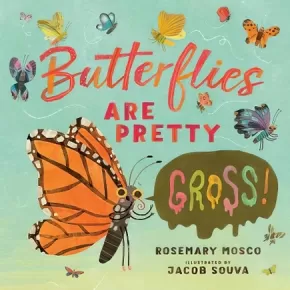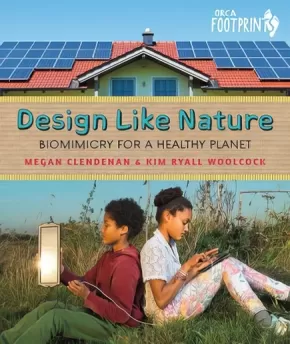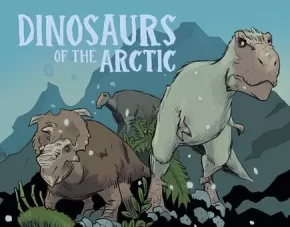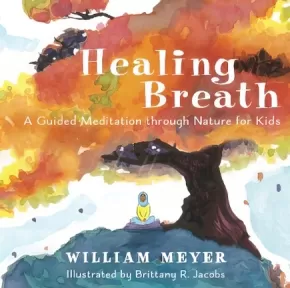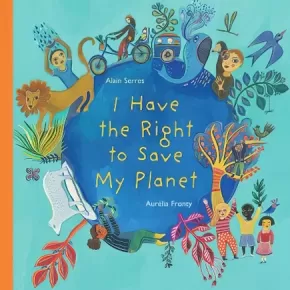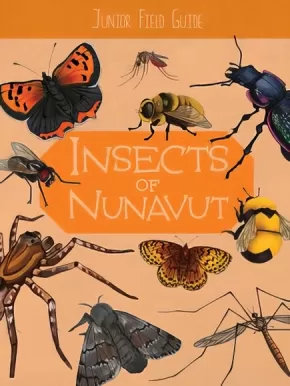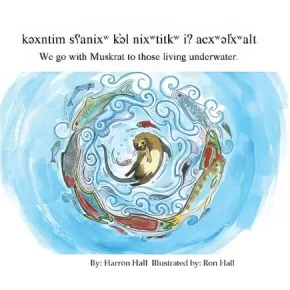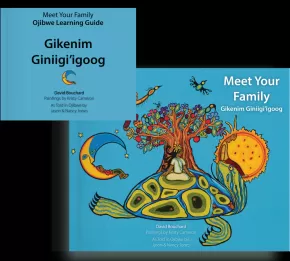
Nature
136
-
150
of
444 Results;
Sort By
Go To
of 30
Beavers: Radical Rodents and Ecosystem Engineers
$24.95
Format:
Hardcover
ISBN / Barcode: 9781459824690
Synopsis:
Synopsis:
By cutting trees and building dams, beavers shape landscapes and provide valuable wetland homes for many plants and animals. These radical rodents were once almost hunted to extinction for their prized fur, but today we are building a new relationship with them, and our appreciation of the benefits they offer as habitat creators and water stewards is growing. Packed with facts and personal stories, this book looks at the beaver’s biology and behavior and illuminates its vital role as a keystone species. The beaver’s comeback is one of North America’s greatest conservation success stories and Beavers: Radical Rodents and Ecosystem Engineers introduces readers to the conservationists, scientists and young people who are working to build a better future for our furry friends.
Educator & Series Information
This book is part of the Orca Wild series that examines the intricacies of animals, ecosystems, humans and our relationships to each other.
Recommended for ages 9 to 12.
As beaver populations recover, conflicts between beavers and humans are increasing. This book offers practical solutions that are good for both beavers and humans.
Recent studies have highlighted the ability of beavers to help mitigate the effects of climate change, particularly drought, flooding and wildfires.
Beavers are fascinating animals with a high recognition factor (their buckteeth and flat tail are unmistakable) and beaver kits are irresistibly cute.
Additional Information
128 pages | 7.50" x 9.00"
Bebikaan-ezhiwebiziwinan Nimkii: The Adventures of Nimkii
$30.00
Artists:
● Butzin Rachel (Indigenous;)
Format:
Hardcover
Text Content Territories:
Indigenous American; Native American; Anishinaabeg; Ojibwe (Chippewa); Indigenous Canadian; First Nations; Anishinaabeg; Ojibway;
ISBN / Barcode: 9781736551912
Synopsis:
Synopsis:
In this beautifully illustrated children’s book, readers will experience the world in a new way as they see the seasons through the joyful eyes of Nimkii, a fun, nature-loving dog who will teach them a whole new language: Ojibwemowin, a language spoken by the indigenous tribes in parts of Michigan, Ontario, northern Minnesota and Wisconsin, and Alberta.
Whether hunting for maple trees in the fall, playing in the snow in the winter, enjoying the spring showers, or swimming in the summer, Nimkii seeks out activities that allow her to enjoy her natural surroundings. Fun and inspiring, this bilingual book helps children and adults communicate in new ways while exploring different elements of culture.
Educator Information
Children's Literature
Dual-language: English and Ojibwemowin
Translated by Margaret Noodin, of the Pine Marten Clan.
Additional Information
38 pages | 11.00" x 8.50" | Hardcover
Butterflies Are Pretty ... Gross!
$24.99
Artists:
Format:
Hardcover
ISBN / Barcode: 9780735265929
Synopsis:
Synopsis:
Warning -- this book contains top-secret information about butterflies! Prepare to be shocked and grossed out by this hilarious and totally true picture book introduction to a fascinating insect.
Butterflies are beautiful and quiet and gentle and sparkly . . . but that's not the whole truth. Butterflies can be GROSS. And one butterfly, in particular, is here to let everyone know! Talking directly to the reader, a monarch butterfly reveals how its kind is so much more than what we think. Did you know some butterflies enjoy feasting on dead animals, rotten fruit, tears and even poop? Some butterflies are loud, like the Cracker butterfly. Some are stinky -- the smell scares predators away. Butterflies can be sneaky, like the ones who pretend to be ants to get free babysitting.
This hilarious and refreshing book with silly and sweet illustrations explores the science of butterflies and shows that these insects are not the stereotypically cutesy critters we often think they are -- they are fascinating, disgusting, complicated and amazing creatures.
Reviews
“A proboscis-in-cheek introduction to butterflies that will appeal to reluctant readers and bug enthusiasts alike.” --STARRED REVIEW, Kirkus Reviews
Educator & Series Information
Recommended for ages 4 to 8.
This book is part of the Nature's Top Secrets series.
Additional Information
36 pages | 9.38" x 9.44"
Chasing Bats and Tracking Rats: Urban Ecology, Community Science, and How We Share Our Cities
$14.95
Artists:
Format:
Paperback
ISBN / Barcode: 9781773215396
Synopsis:
Synopsis:
Gripping narrative non-fiction with STEM and social justice themes that proves cities can be surprisingly wild places—and why understanding urban nature matters.
What can city bees tell us about climate change? How are we changing coyote behavior? And what the heck is a science bike? Featuring the work of a diverse group of eleven scientists—herself included!—Dr. Cylita Guy shows how studying urban wildlife can help us make cities around the world healthier for all of their inhabitants. In the process, Guy reveals how social injustices like racism can affect not only how scientists study city wildlife, but also where urban critters are likelier to thrive. Sidebars include intriguing animal facts and the often-wacky tools used by urban ecologists, from a ratmobile to a bug vacuum. Cornelia Li’s engaging illustrations bring the scientists’ fieldwork adventures to life, while urban ecology challenges encourage readers to look for signs of wildlife in their own neighborhoods.
Educator Information
Recommended for ages 9 to 12
Themes: biology, environmental science & ecosystems, experiments & projects
Table of Contents
Introduction: Living in the Urban Jungle
Talk Like an Urban Ecologist: Key Terms
Chapter 1: Chasing Down Big Browns
How much do wildlife rely on city green spaces? Cylita Guy tracks bats in Toronto, Canada.
Chapter 2: Ratmobile to the Rescue
How do animals in cities affect human health? Kaylee Byers studies how rats move around Vancouver, Canada.
Chapter 3: Bees and Bug Vacuum
Why are cities a good place to study the impact of climate change on bees? Charlotte de Keyzer looks at what bees and the plants they pollinate can tell us about the effects of climate change in cities like Toronto, Canada.
Chapter 4: Backyard Bear Buffet
What happens when humans and wildlife in cities don’t get along? Jesse Popp gets to the bottom of human-bear conflict in Sudbury, Canada.
Chapter 5: Bold Coyote, Bashful Coyote
How are humans changing animal behavior in cities? Chris Schell studies coyote behavior in Utah and Washington, and looks at how human policies like redlining affect urban biodiversity.
Chapter 6: Microplastics, Major Problems
How does the pollution we create affect city animals? Rachel Giles wades into Toronto’s waterways to discover the impacts of pollution on invertebrates.
Chapter 7: Birdwatching Bias
What happens when citizen science doesn’t tell us the whole story? Deja Perkins asks how human bias can affect what we know about birds in cities like Durham, Chapel Hill, and Raleigh, North Carolina.
Chapter 8: A Bike to Beat the Heat
Why are greener cities better for people? Carly Ziter pedals around Madison, Wisconsin to track how trees cool cities.
Conclusion: But this is only the beginning!
Acknowledgments
Select Sources
Index
Additional Information
104 pages | 7.50" x 9.80" | Paperback
Design Like Nature: Biomimicry for a Healthy Planet
$21.95
Format:
Hardcover
ISBN / Barcode: 9781459824645
Synopsis:
Synopsis:
Did you know that lamps can be powered by glowing bacteria instead of electricity? That gloves designed like gecko feet let people climb straight up glass walls? Or that kids are finding ways to make compostable plastic out of banana peels? Biomimicry, the scientific term for when we learn from and copy nature, is a revolutionary way to look to nature for answers to environmental problems such as climate change.
In Design Like Nature young readers discover innovations and inventions inspired by the environment. Nature runs the entire planet with no waste and no pollution. Can humans learn to do this too? It's time to step outside and start designing like nature.
Educator & Series Information
Recommended for ages 9 to 12.
This book is part of the Orca Footprint series. Kids today inhabit a world full of complex—and often mystifying—environmental issues. Orca Footprints aim to help kids answer their questions about the state of the natural world with well-researched, simply-expressed information and powerful images. With topics such as food production, water, cycling and sustainable energy, these books will inspire kids to take action.
A free, downloadable scavenger hunt activity is available: Scavenger Hunt - Design Like Nature: Biomimicry for a Healthy Planet
Additional Information
48 pages | 8.00" x 9.50"
Dinosaurs of the Arctic - Nunavummi Reading Series
$16.95
Artists:
Format:
Hardcover
ISBN / Barcode: 9781774502655
Synopsis:
Synopsis:
Learn about dinosaurs that lived in the North!
This book gives interesting facts about the different types of dinosaurs and other ancient animals that lived in the Arctic long ago.
Educator & Series Information
This book is part of the Nunavummi Reading Series, a Nunavut-developed series that supports literacy learning while teaching readers about the people, traditions, and environment of the Canadian Arctic. It is a Level 11 book in the series.
Nunavummi Reading Series books have also been officially levelled using the Fountas & Pinnell Text Level Gradient™ Levelling System. This book's F&P Level is M.
Curriculum Connections: History; Science
Recommended for ages 6 - 8.
Additional Information
28 pages | 9.00" x 7.00" | Hardcover
Do You Know Where the Animals Live?: Discovering the Incredible Creatures All Around Us
$24.95
Format:
Hardcover
ISBN / Barcode: 9781771646598
Synopsis:
Synopsis:
From the New York Times-bestselling author of The Hidden Life of Trees comes a book for kids ages 8-12 about animals at home and around the world. Get ready to become an animal expert!
Perfect for STEM home-schooling, online learning, and outdoor education.
Have you ever wondered ….
Are worms afraid of the rain?
Do fish use farts to communicate?
Why do elephants stomp their feet?
Do animals dream? What do they dream about?
Do animals get scared, feel happy, or become excited like we do?
In this highly visual, fun, and interactive book, kids will get to know all sorts of animals, from birds and caterpillars in their own backyard, to grizzly bears in chilly Alaska, to puffer fish in the waters of Australia.
Through a mix of at-home activities, facts, stories, and pictures,kids will learn:
- How to spot animal homes and follow their movements
- How our actions impact animals and their ability to survive and thrive in nature
- About some of the wildest and most interesting creatures on Earth
This wonderful introduction to the animal kingdom features playful questions, fun quizzes, and activities that will help kids study animals in their own backyards—and make the world a better place for them.
Educator Information
Recommended for ages 8 to 12.
Guided Reading Level: R
An introduction to animals and their environments: A thoughtful, informative, and easy-to-understand approach to teaching kids where different animal species live, what they eat, how they interact with their families, how they communicate, and what they think and feel.
Additional Information
84 pages | 8.50" x 11.00" | Hardcover
Forest Magic: A Guidebook for Little Woodland Explorers
$16.95
Artists:
Format:
Hardcover
ISBN / Barcode: 9781771089265
Synopsis:
Synopsis:
A beautifully illustrated, compact, interactive nature guide to exploring the forest for young readers.
What do you notice when you walk in the forest? Different types of trees, plants, and mushrooms? Maybe you hear a squirrel chattering or birds singing. Can you feel all the different kinds of moss? And look there! Hidden animal homes and interesting bugs.
With this compact non-fiction guide, young readers will be equipped to seek out, identify, and appreciate the woodland magic that exists all around them. Featuring rich vocabulary words like "nurse log," "lichen," and "sapling," this beautifully illustrated book is the ideal companion for little forest explorers. Incorporating all five senses and encouraging imaginative play, it even includes pixies and fairies (pixie cup lichen and fairy slipper wildflowers)! Forest Magic will be the book you reach for on the way out the door to explore your own backyard.
There's so much to see in a forest. What will you discover?
Educator & Series Information
Recommended for ages 4 to 8.
This book is part of the Little Explorers Series.
Additional Information
32 pages | 8.00" x 6.50"
Healing Breath: A Guided Meditation through Nature for Kids
$26.50
Artists:
Format:
Hardcover
ISBN / Barcode: 9781608687466
Synopsis:
Synopsis:
A gorgeously illustrated guided meditation to calm and soothe as well as inspire and empower us to act on behalf of the natural world.
Join the award-winning team of writer and teacher Bill Meyer and illustrator Brittany R. Jacobs on a guided meditation journey through rich, colorful landscapes spanning the globe. Breathe into the experience of waves on the ocean, trees in a forest, and the warmth of a desert, and feel your connection to all of life, from barnacles to baboons to falcons to farmers. This magical meditation-in-a-book is ideal for anyone who wants to simultaneously calm down and rise up to the world in all its wonders.
Reviews
"This guided meditation begins with a comforting note from the author validating climate anxiety and other concerns. According to this opening text, the purpose of the book is to help readers cope with worry “about the future of our planet,” which will, in turn, “empower” them to take action.... The book’s illustrations are striking and feature characters with diverse skin tones and hair textures, including one dark-skinned child who wears hijab. The words are lyrical and comforting, and the images that the meditation conjures are both kid friendly and relaxing." - Kirkus Reviews
Additional Information
32 pages | 9.00" x 9.00" | Hardcover
Humongous Fungus
$21.99
Artists:
Format:
Hardcover
ISBN / Barcode: 9780744033335
Synopsis:
Synopsis:
Inhabiting a whole kingdom of their own, fungi can be found in every ecosystem.
They carpet the forest floor, and hidden fungi decompose matter, feed plants, and affect how animals function.
Their beautiful mushrooms come in all colors, shapes, and sizes. Fungal stories include the greening of the Earth, when fungi helped plants first grow on land, and the mass destruction of crops through fungal disease. From the villains of the possible extinction of bananas to plastic-eating eco-warriors, there are more than 1.5 million fungus species, and a huge, unknown number of unnamed "dark" types. They affect other creatures, too, for example by helping break down food, or controlling their minds against their will.
Continuing from the gorgeous Under Your Feet, and touching on similar topics of conservation and the secret processes within ecosystems, this book of fabulous fungi will intrigue and amaze young readers.
Educator Information
Recommended for ages 7 to 9.
Additional Information
64 pages | 9.00" x 11.00" | Hardcover
I Have the Right to Save My Planet
$19.95
Artists:
Format:
Hardcover
ISBN / Barcode: 9781773064871
Synopsis:
Synopsis:
This beautifully illustrated picture book is about a child’s right to advocate for the environment they live in.
All children have the right to learn about the world, to celebrate the water, air and sunshine, and to be curious about the animals and plants that live on our planet. All children also have the right to learn about endangered species, to be concerned about plastic in the ocean, and to understand what a changing climate means for our Earth.
Scientists tell us that every living thing is connected. When we cut down forests, we destroy animal habitats. When we throw plastic in the garbage, it never really goes away. When we spray pesticides on our fruit and vegetables, we poison the earth, animals and ourselves.
What can children do to help? All children can draw posters of endangered animals to raise awareness. All children can send a letter to the leader of their country, signed by every member of their family. All children can protest along with their parents. Children have the right to do all these things as proclaimed in the United Nations Convention on the Rights of the Child. All children have the right to try to help our Earth, in whatever ways they can.
Told from the perspective of a child, this colorful and vibrant book explores what it means to be a child who dreams of a beautiful future for their planet.
Educator & Series Information
Recommended for ages 4 to 7.
Part of the I Have the Right series.
Correlates to the Common Core State Standards in English Language Arts:
CCSS.ELA-LITERACY.RI.2.3
Describe the connection between a series of historical events, scientific ideas or concepts, or steps in technical procedures in a text.
CCSS.ELA-LITERACY.RI.3.2
Determine the main idea of a text; recount the key details and explain how they support the main idea.
CCSS.ELA-LITERACY.RI.3.3
Describe the relationship between a series of historical events, scientific ideas or concepts, or steps in technical procedures in a text, using language that pertains to time, sequence, and cause/effect.
CCSS.ELA-LITERACY.RI.2.6
Identify the main purpose of a text, including what the author wants to answer, explain, or describe.
CCSS.ELA-LITERACY.RI.1.8
Identify the reasons an author gives to support points in a text.
CCSS.ELA-LITERACY.RI.2.8
Describe how reasons support specific points the author makes in a text.
Additional Information
48 pages | 10.00" x 10.00"
Insects of Nunavut
$12.95
Artists:
Format:
Paperback
Text Content Territories:
Indigenous Canadian; Inuit;
ISBN / Barcode: 9781774504741
Synopsis:
Synopsis:
There are lot of different types of insects in Nunavut. Learn about what defines an insect, as well as their life cycle, metamorphisis, and adaptions. This science book provides information about what different insects look like, where they live, what they eat, their behaviour, and other interesting facts about them, along with colourful illustrations and photographs.
Educator & Series Information
Recommended for ages 8 to 10.
This book is part of the Junior Field Guide series. Perfect for learning all about living things in the Arctic! These Junior Field Guides give information and interesting facts about the different animals that live in Nunavut. Books in this series also share traditional knowledge about living things and teach the traditional Inuit value of environmental stewardship.
Additional Information
32 pages | 10.00" x 7.50" | Paperback
kəxntim sʕanixʷ k̕əl nixʷtitkʷ acxʷəl̕xʷalt / We Go With Muskrat to Those Living
$15.95
Artists:
Format:
Paperback
Text Content Territories:
Indigenous Canadian; First Nations; Salish; Interior Salish; Syilx (Okanagan);
ISBN / Barcode: 9781926886695
Synopsis:
Synopsis:
Muskrat takes the children through all the many fish that live in the water of the Okanagan valley.
kəxntim sʕanixʷ k̕əl nixʷtitkʷ acxʷəl̕xʷalt / We Go With Muskrat to Those Living Underwater is an interactive story with sʕanixʷ (Muskrat) in the lead, allowing readers to learn both the n’syilxwcn and English names of underwater creatures living in the Okanagan Valley. The book seamlessly combines beautiful imagery with amusing descriptions as Muskrat introduces a diverse set of underwater creatures.
Educator & Series Information
Recommended for ages 6 to 9.
Author Harron Hall has written several children's books that incorporate her Indigenous heritage and her deep commitment to protecting the land and water, including The Water Sings to Suli?, Water Changeling and Lessons from Beaver's Work.
Learn the names of many fish and aquatic creatures that live in the Okanagan Valley in n’syilxwcn (the language spoken by the Sylix/Okanagan peoples) and English.
Features bright and colorful illustrations from Indigenous artist Ron Hall.
This book is part of the Follow the Water series.
Additional Information
40 pages | 8.00" x 8.00"
Meet Your Family / Gikenim Giniigi'igoog
$24.99
Artists:
Format:
Hardcover
Text Content Territories:
Indigenous Canadian; First Nations; Anishinaabeg; Ojibway;
ISBN / Barcode: 9781989122662
Synopsis:
Synopsis:
Mother Earth, we come from her, we go to her, without her we wouldn't be here, she gives all of us life and because of her we are all one family. In many segments of Indigenous life we speak of Mother Earth, Father Sky, Grandfather Sun, and Grandmother Moon. Meet Your Family / Gikenim Giniigi'igoog is a rhythmic poem that will enlighten readers on how to view these important figures and share a greater concept of seeing the world as our natural family. Meet Your Family / Gikenim Giniigi'igoog is presented in both English and Ojibway. An additional softcover book written in Ojibway with a phonetics guide is included inside this hardcover book.
Educator Information
Recommended for ages 6 to 8.
Dual-language English/Ojibwe book. An additional softcover book in Ojibwe with a language learning guide is included inside the hardcover book.
This book offers a spiritual way of looking at all living things on earth as being connected through Mother Nature.
A teacher lesson plan is available: Meet Your Family Teacher Lesson Plan
This book is available in French and Ojibway: Rencontre ta famille / Gikenim Giniigi'igoog
Additional Information
28 pages | 10.95" x 8.50"
Mino-te-mah-ti-zee-win, A Good Way of Life Colouring Book
$14.95
Artists:
Format:
Paperback
Text Content Territories:
Indigenous Canadian;
Grade Levels: Kindergarten; 1;
ISBN / Barcode: 9781927849705
Synopsis:
Synopsis:
The National Indigenous Diabetes Association (NIDA) envisions diabetes-free communities. Their mission is to lead the promotion of healthy environments and to prevent and manage diabetes by working together with people, communities, and organizations. NIDA Elders partnered with Kayla Perry, registered dietitian with the Diabetes Integration Project, and the Manitoba First Nations Education Resource Centre (MFNERC) to present this colouring book, which features some traditional plants and animals (Our Relations) from our Elders’ territories and the lands in between.
The purpose of this colouring book is to provide an easy-to-read, visual resource with practical guidance that children and caregivers can use to learn about nutritional information from traditional foods and plants. This resource also shares some teachings and stories attached to these medicines. Traditional foods are plants or animals that are indigenous to the land, meaning they existed naturally on the land before settlers arrived. Food in the form of these plants, fruits, vegetables, or animals is a gift.
NIDA would like to acknowledge that the work for this project took place in the traditional territories of the Dakota, Anishinaabe, Cree, Ojibwe-Cree, and Dene Peoples, and the homeland of the Red River Métis Nation.
Educator Information
Recommended by the publisher for grades 1 and under.
Sort By
Go To
of 30





